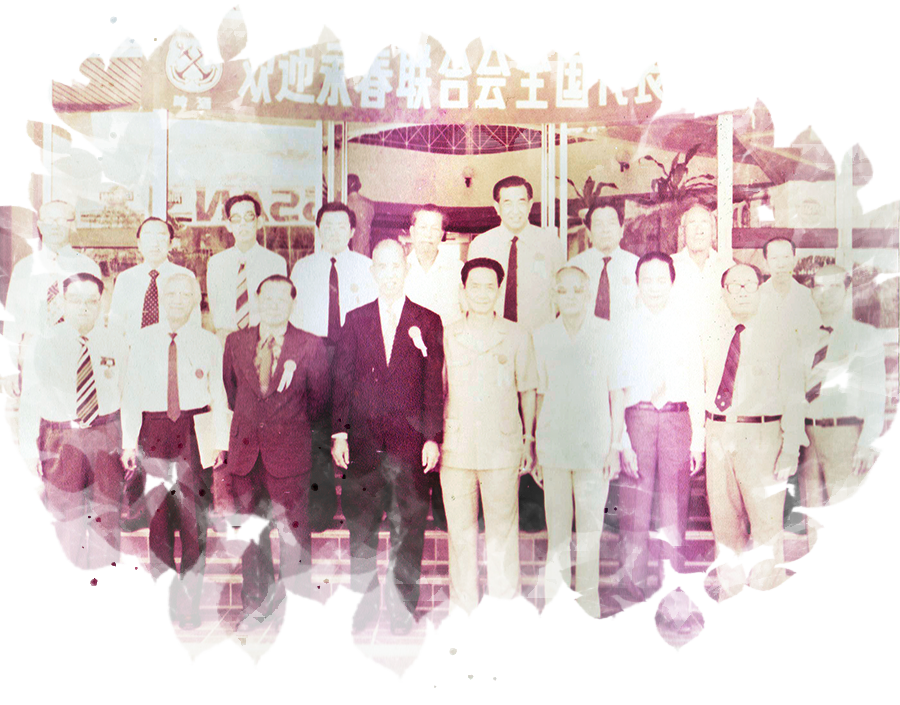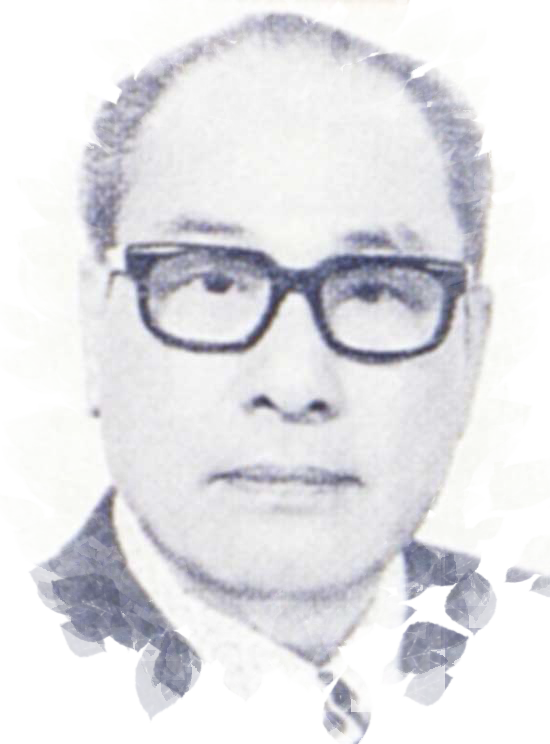The Engchoon Kuala Lumpur History Gallery






The Associated Eng Choon Societies
of Malaysia
The predecessor of the Associated Eng Choon Societies of Malaysia was the “Eng Choon Association of Nanyang”, established in Singapore in 1928. At that time, there were not many Eng Choon associations across the country, and due to inconvenient of transportation and slow delivery of messages, the association could not fully integrate the Eng Choon communities in Malaya. During the three years and eight months of the Japanese occupation that beginning in 1941, all Chinese community activities nearly came to a halt. Some community leaders had called for local Chinese support for China’s anti-Japanese movement during the Japanese invasion in China. They not only had leaded the local fund generating activities, also had launched movement of boycott Japanese goods. Thus, upon arrival of Japanese army in Malaya, they were the key target of the Japanese army. Consequently, after World War II, most Chinese associations were struggling to survive and took several years to recover. During this period, the “Eng Choon Association of Nanyang” was essentially existed in name only.
The Kuala Lumpur Eng Choon Hoey Kuan re-elected its first post-war board of directors in 1947, its operation was gradually getting back on track. Additionally, the Chinese Civil War was nearing at its end, with the Kuomintang retreating to Taiwan in 1949 and the People’s Republic of China being established by the Communist Party. This not only caused international political changes but also forced overseas Chinese to choose their nationality between their homeland and their place of residence. Under the Emergency Ordinance of 1948, many Chinese were forced to return to China. Shortly after the Communist Party took power in China, many Chinese with relatives in overseas chose to leave China and settle abroad.
After the Japanese army left, Malaya began brewing its independence movement. Through negotiations, the British government made concessions and planned to transfer power to an alliance formed by UMNO (United Malays National Organization), MCA (Malayan Chinese Association), and MIC (Malayan Indian Congress). Before Malaya’s independence, the MCA launched a citizenship application movement to ensure that the Chinese who chose to stay could obtain Malayan citizenship. After Malaya’s independence in 1957, the Chinese who remained in Malaya had essentially abandoned their homeland in terms of national identity. Many clan associations were established during this period, including those of the Eng Choon clan, which formed organizations around the time of independence. The primary reason was that the first generation of immigrants realized that the possibility of returning to their homeland during their lifetime was slim. While reminiscing about their hometown, they could only consider the foreign land as their new home. They called upon their clan members to build family temples and replicate the clan culture of their ancestral land, using traditional cultural resources from their hometown to reconstruct the community.
On April 7, 1957, the Kuala Lumpur Eng Choon Hoey Kuan held its annual meeting. During the session for temporary motions, Lin Lianyu proposed the organization of a permanent institution for the Pan-Malayan Eng Choon Association. It was decided that pioneers like Li Yannian, Lin Bangling, Huang Zhigui, Chen Xiqi, and Zheng Di would be responsible for drafting the proposal. The establishment of the Associated Eng Choon Societies of Malaysia occurred in the year of Malaya’s independence, in response to the changing times. Many local Eng Choon people had applied to become local citizens. Given the large number of Eng Choon compatriots and the existence of more than twenty Eng Choon associations across the country, it was deemed necessary to unite the clan and consolidate community strength to ensure the Eng Choon community’s foothold in this land. The Associated Eng Choon Societies of Malaysia was finally founded on May 4, 1957, with representatives from 22 units and more than a hundred attendees. Li Yannian, president of The Kuala Lumpur Eng Choon Hoey Kuan, was elected as the first chairman of the board. Lin Bangling served as vice chairman, Zheng Di as treasurer, Huang Zhigui as general affairs officer, and Lin Lianyu as secretary. Most of the important positions on the board were held by representatives from the Kuala Lumpur Eng Choon Hoey Kuan, highlighting its significance during the association’s establishment.
In the early days of the establishment of Yong Lian Hui, the board of directors held a meeting in Seremban and took a group photo
Source:Provided by Negeri Sembilan Eng Choon Association

When the Associated Eng Choon Societies of Malaysia (Yong Lian Hui) was first established, it immediately set up a scholarship and loan fund for university students, making it one of the earlier associations in the country to do so. This demonstrates the Eng Choon community’s emphasis on education. By 1981, the funds raised by Yong Lian Hui were amounted to 480,000 ringgit, with members of the Kuala Lumpur Eng Choon Hoey Kuan contributing 285,000 ringgit, nearly 60% of the total fund raised. Of this amount, nearly 160,000 ringgit was donated by Li Yannian, Lin Bangling and his son, Huang Zhenxiu and his son, and Zheng Di through his company Meisheng, where he held a major stake. The successful business ventures of leadership of the Kuala Lumpur Eng Choon Hoey Kuan has greatly strengthened its economic foundation. Over a span of about ten years, key figures like Li Yannian, Lin Bangling and his son, and Zheng Di’s company Meisheng made numerous donations to the scholarship fund, contributing significantly to the fund’s growth. Without the support of the members of Kuala Lumpur Eng Choon Hoey Kuan, the rate of accumulation of the scholarship fund might not have been as rapid as it is.
After the establishment, Yong Lian Hui did not purchase its own premises but instead used the office and activity space provided by the Kuala Lumpur Eng Choon Hoey Kuan. More importantly, for the first twenty years of Yong Lian Hui’s existence, the Kuala Lumpur Eng Choon Hoey Kuan covered the vast majority of Yong Lian Hui ‘s routine expenses. For instance, in 1977, when Yong Lian Hui raised 50,000 ringgit from its national branches to cover routine expenses, the Kuala Lumpur Eng Choon Hoey Kuan contributed 10,000 ringgit. In terms of operations, the youth leadership training camps that jointly organized by the Yong Lian Hui ‘s youth and women’s groups, were primarily hosted by the Kuala Lumpur Eng Choon Hoey Kuan youth’s group, becoming a key activity for Yong Lian Hui .
Since its inception, the Association has had eight presidents, four of whom came from the Kuala Lumpur Eng Choon Hoey Kuan. If we consider the duration of their terms, representatives from Kuala Lumpur Eng Choon Hoey Kuan held office for about two-thirds of the total term periods. Moreover, representatives from the Kuala Lumpur Eng Choon Hoey Kuan have held key positions in every administration of Yong Lian Hui. In the first twenty-five years after Yong Lian Hui was founded, its key positions almost entirely overlapped with the leadership of the Kuala Lumpur Eng Choon Hoey Kuan. Li Yannian, while leading the Kuala Lumpur Eng Choon Hoey Kuan, also served as president of Yong Lian Hui. The Yong Lian Hui’s office was located in the building of Kuala Lumpur Eng Choon Hoey Kuan. The growth and development of Yong Lian Hui were essentially built on the foundation that laid by the Kuala Lumpur Eng Choon Hoey Kuan.
The establishment of the Associated Eng Choon Societies of Malaysia owes a great deal to Li Yannian
Source: Provided by Kuala Lumpur Eng Choon Hoey Kuan

The advocate for Chinese education, Lin Lianyu, was the proposer for the establishment of Yong Lian Hui and served as its first secretary-general
Source: Provided by Centre for Malaysian Chinese Studies

Li Yannian’s retirement dinner, accompanied by his two sons, entered the venue
Source: Provided by Kuala Lumpur Eng Choon Hoey Kuan


